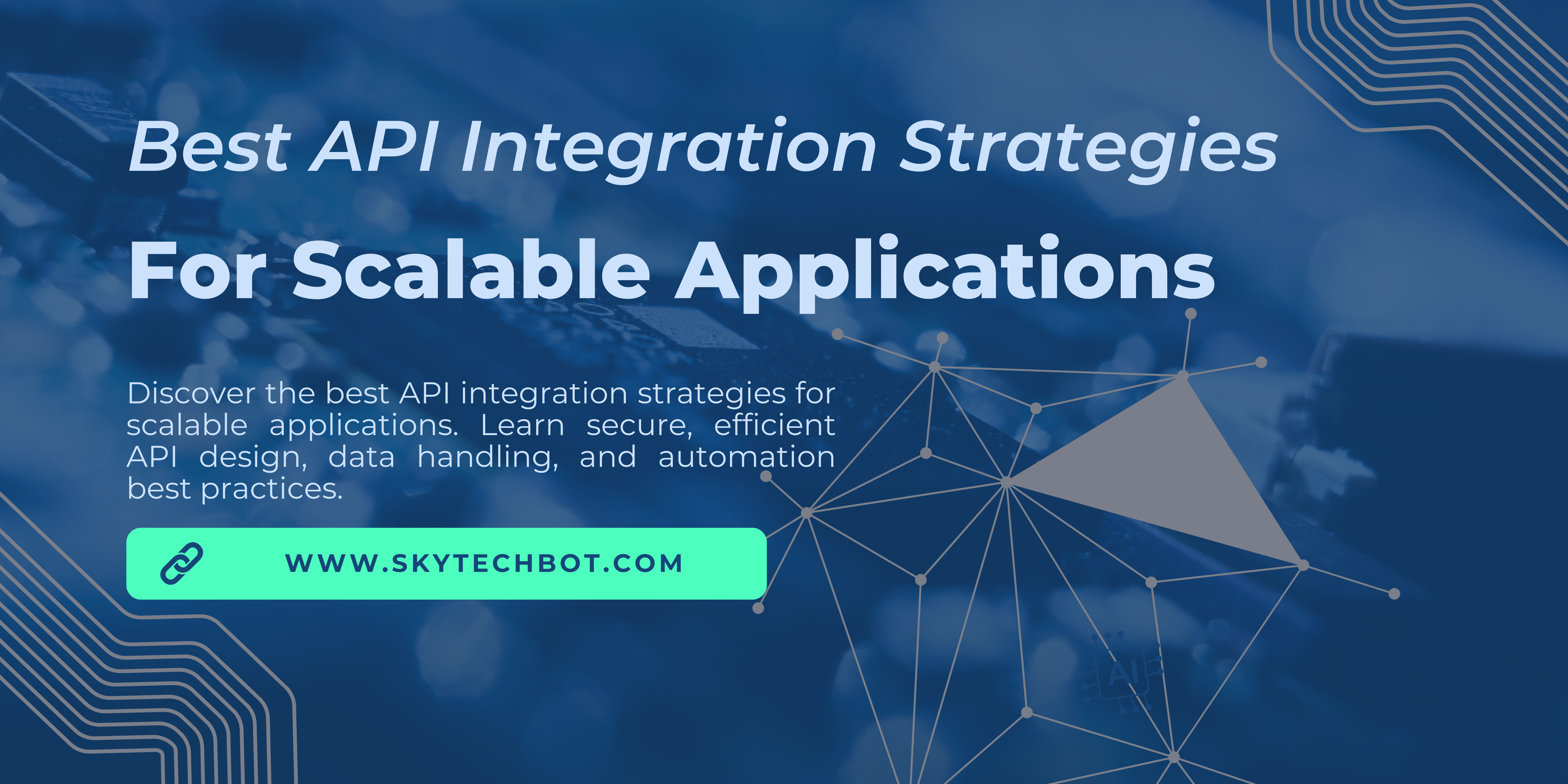In today’s digital landscape, APIs (Application Programming Interfaces) play a crucial role in enabling seamless communication between different systems, applications, and services. Whether you’re building a SaaS product, an enterprise solution, or an eCommerce platform, integrating APIs effectively is key to ensuring scalability, performance, and security.
In this blog, we’ll explore the best API integration strategies for building scalable applications, covering essential techniques, best practices, and real-world examples.
What is API Integration?
API integration allows different software systems to communicate and share data efficiently. It enables businesses to connect various applications, automate workflows, and enhance user experiences. APIs come in different types, including:
- RESTful APIs: The most common type, based on HTTP and JSON.
- GraphQL APIs: Flexible APIs that allow clients to request only the data they need.
- SOAP APIs: Enterprise-level APIs that use XML messaging.
- Webhooks: Event-driven API calls triggered by specific actions.
Why API Integration Matters for Scalable Applications
Scalability is a key factor in modern application development. APIs enable:
- Automation: Reduce manual processes by automating workflows.
- Interoperability: Connect third-party services seamlessly.
- Data Consistency: Synchronize data across multiple platforms in real time.
- Cost Efficiency: Reduce development costs by leveraging existing APIs.
Top API Integration Strategies for Scalability
Design Scalable API Architectures
To ensure long-term scalability, follow these API architectural best practices:
- Use RESTful or GraphQL APIs for efficient data exchange.
- Adopt a Microservices Architecture to decouple services.
- Implement API Gateways (e.g., AWS API Gateway, Kong) for centralized API management.
- Ensure asynchronous processing with event-driven architectures.
Use API Versioning for Backward Compatibility
As your application evolves, maintaining backward compatibility is essential. API versioning allows you to:
- Support older clients without breaking functionality.
- Introduce new features without disrupting existing users.
- Use techniques like URL versioning (e.g., /v1/, /v2/) or Header-based versioning.
Implement Robust Authentication & Security Measures
API security is crucial to prevent unauthorized access. Best security practices include:
- Using OAuth 2.0 & OpenID Connect for secure authentication.
- Encrypting API keys and tokens with JWT (JSON Web Tokens).
- Implementing rate limiting to prevent abuse.
- Enforcing HTTPS to secure data in transit.
Optimize API Performance & Latency
Slow APIs can lead to poor user experiences. Improve performance by:
- Using Caching (Redis, CDN, in-memory databases) to reduce API calls.
- Optimizing database queries to prevent slow responses.
- Implementing pagination & filtering to limit data loads.
Use Webhooks for Real-Time Data Sync
Instead of constantly polling an API, use webhooks for real-time updates. Benefits include:
- Reduced API calls and bandwidth usage.
- Faster updates and synchronization.
- Efficient event-driven architecture.
Ensure API Monitoring & Logging
To maintain reliability, track API performance using:
- API Monitoring Tools (Postman, Datadog, New Relic).
- Logging & Debugging Tools (ELK Stack, AWS CloudWatch).
- Automated error handling & alerts for failures.
Automate API Testing
Ensure API reliability by automating testing with tools like:
- Postman – API request testing.
- JMeter – Performance and load testing.
- SoapUI – API security and functional testing.
🚀 Need Help with API Integration?
We provide expert API consulting and integration services. Contact us today to streamline your application’s API strategy!
Frequently Asked Questions (FAQs)
1. What is the best API architecture for scalable applications?
Microservices-based APIs with RESTful or GraphQL architecture are ideal for scalability.
2. How do I secure my APIs?
Use OAuth 2.0, JWT authentication, HTTPS, and API rate limiting to protect APIs from attacks.
3. What’s the difference between REST and GraphQL APIs?
REST APIs return fixed responses, while GraphQL allows clients to request only the required data.
4. How do webhooks improve API integration?
Webhooks enable real-time data updates, reducing API polling and improving efficiency.
Need expert API integration solutions? Let’s discuss your project today!


